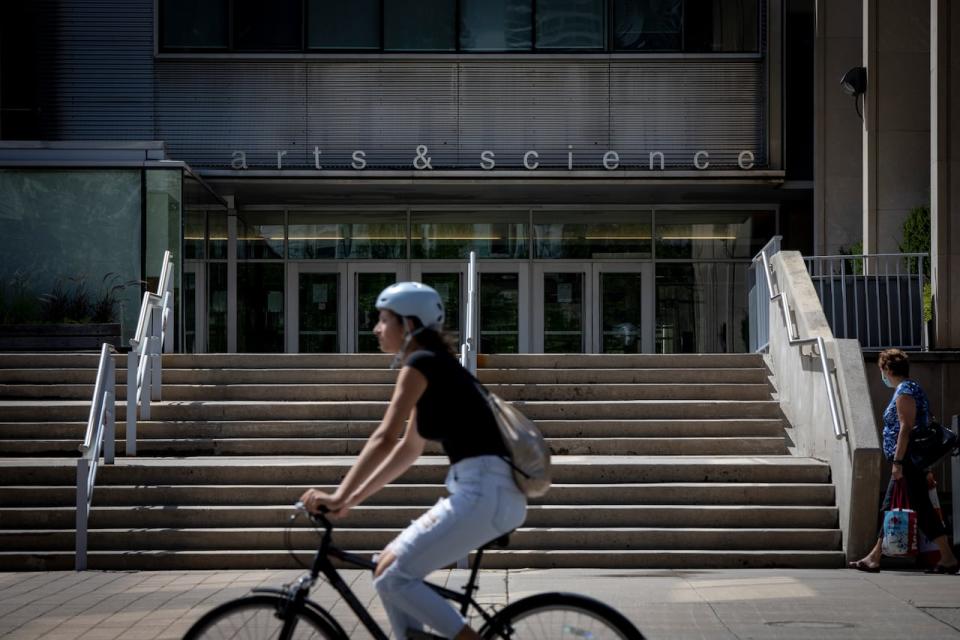New building powers for universities unveiled in proposed Ontario housing legislation

The Ford government is tabling new housing legislation aimed at building homes faster in the province and achieving its goal of having 1.5 million new homes in Ontario by 2031.
Housing Minister Paul Calandra says the government's "Cutting Red Tape to Build More Homes Act" includes a number of changes, such as giving universities more power to build student housing on its land, giving municipalities the ability to address stalled developments and will prioritize ready-to-go housing projects.
The act will, if passed, require ministries to develop new business service standards for building permits. The government says it would reduce regulatory burden, make processes more transparent and cut down on project delays.
"These measures recognize the struggles that our municipal partners have faced in building homes and are targeted at removing those obstacles," said Housing Minister Paul Calandra in a statement. "We're not going to micromanage and dictate a 'one-size-fits-all' approach across the province. Municipalities know their communities best — they know where it makes sense to build homes."

Ontario's new housing legislation exempts publicly-assisted universities from the Planning Act, allowing them to build student residences quicker. (Evan Mitsui/CBC)
The legislation would also exempt public universities from the Planning Act to speed up the building of new student housing units.
"Removing barriers faced by universities when building student housing shows how we can find innovative ways to get shovels in the ground sooner," said Jill Dunlop, minister of colleges and universities, in a statement.
"By requiring postsecondary institutions to publish their student housing policies, we're also ensuring students have access to and are aware of student housing options that are safe, affordable and within an easy commute to campus," she added.
New legislation is 'weak': opposition
The government says by exempting universities from the Planning Act, schools could build higher density student residences. Universities would also be able to avoid planning application fees.
Opposition parties said Tuesday they were concerned about the government inflating its housing start targets by including student housing. The government confirmed Wednesday this legislation will not include student housing toward its housing numbers at this point.
Commenting Wednesday, NDP Leader Marit Stiles says the legislation doesn't go far enough to build homes quickly and efficiently.
"Here in Ontario, I'm sorry to say today's legislation by the Conservative government lets all of those people down again," she told reporters. "This is a weak bill. It lacks ambition, it lacks boldness and it lacks urgency."
"A chunk of what this bill presents is just reversals to bad government policies," Stiles added.
The bill reverses some changes brought in by the Ford government through Bill 23, its "More Homes Built Faster Act", in 2022. It gets rid of an approach to development charges to only offer savings for developers building affordable housing.
Ontario Liberal MPP Adil Shamji says this is becoming common practice by this government.
"Every few months we have a new housing bill, and it usually walks back something that was in the last one," he said.
The government set a goal of constructing 1.5 million new homes by 2031 to alleviate a severe housing crunch that has contributed to high real estate prices and rents.
Ontario's spring budget shows the pace of new home construction is picking up in the province, with 88,000 housing starts projected in 2024, but is still far off the levels needed to get to the government's target. Calandra has previously indicated that Ontario needed to be building at least 125,000 homes this year, ramping up to at least 175,000 per year in the near future.
Building closer to transit
The government said it is also doing away with parking minimums for new builds near transit stations. The housing minister says it will allow for more mixed-use communities with housing, retail and office space close to public transit.
"We're building homes faster and at a lower cost," he said. "Including by letting homeowners and builders decide the right number of parking spaces in new residential developments near transit."
Mass timber construction will also be amended through this housing bill, which will soon allow developers to pursue 18-storey mass timber buildings. Currently, those developments are limited to 12 storeys high. The housing minister says it's just one type of standardized housing the province wants to increase access to.
"It can be all forms of housing," Calandra said. "Single detached, bungalows, townhomes — basically anything you can think of. We can work to ensure it is a design that is approved and then provide that to our municipal partners."
The legislation also includes a "use it or lose it" tool, which gives municipalities more power to address stalled developments. The government has previously said forcing developers to act on building permits would put an end to sluggish building.
Municipalities are also able to provide incentives to certain businesses through the legislation to help attract investment and enact the government's reversal of dissolving Peel Region.
This bill would amend the law that would have broken up the upper-tier region to instead task the transition board initially responsible for overseeing that municipal divorce with considering how to make Peel Region more efficient.


